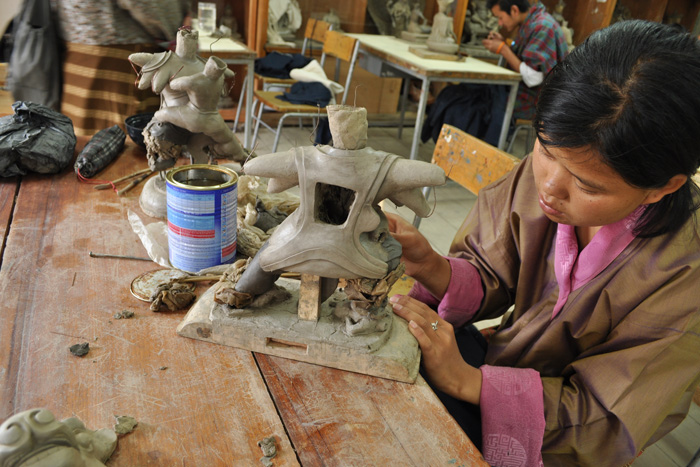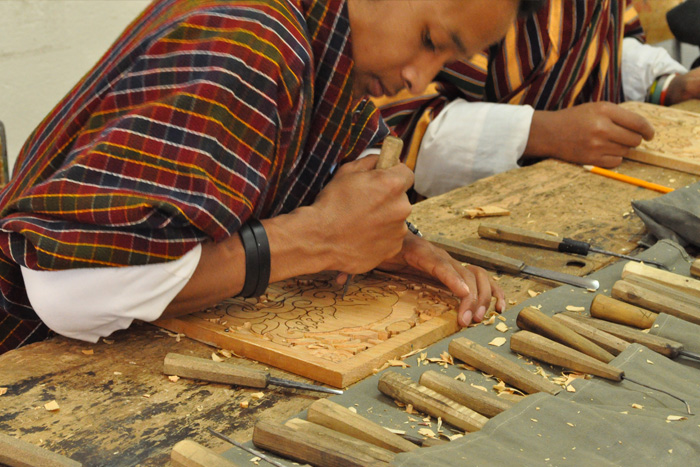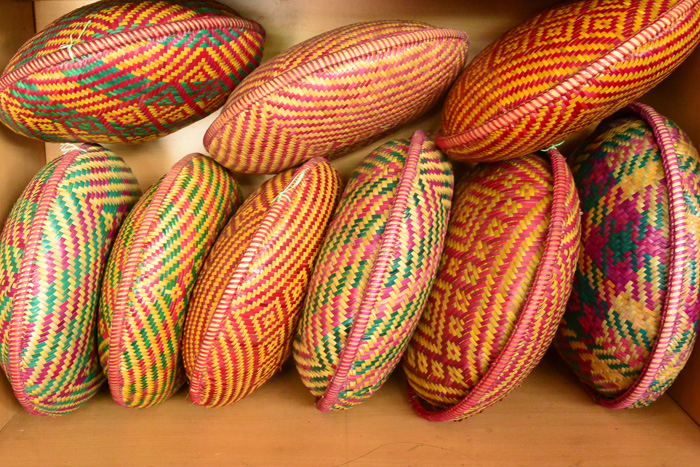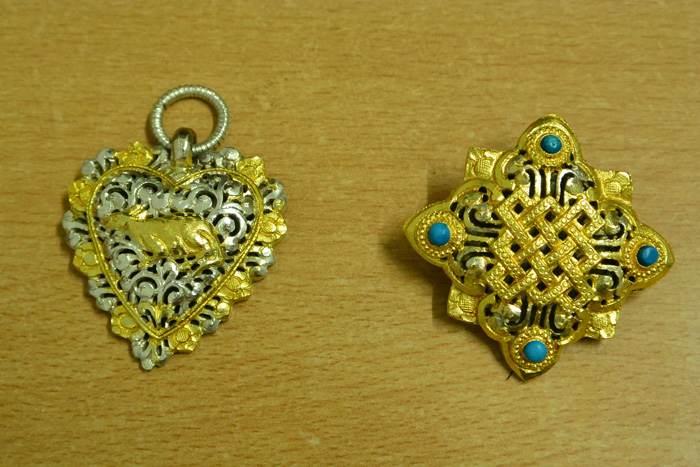Zorig Chusum
In Bhutan, art continues to be an integral aspect of its culture and history. Preserving the traditional arts are a way of celebrating the craftsmanship of a bygone era. The 13 arts or ‘Zorig Chusum’ are the cornerstone of Bhutanese arts and crafts. These were categorized in the 14th century, during the time of the Desi (temporal ruler) Tenzin Rabgye.
For the Bhutanese craftspeople, each piece they create has profound meaning. It can represent a moment of spirituality, connection with their forefathers or a time when they were enlightened creatively. Visit the National Institute of Zorig Chosum to see the next generation of craftspeople determined to keep the traditional arts alive.
The National Institute of Zorig Chusum, founded in 1971 and situated north of the Thimphu city, is the place where young people are trained in the ancient Bhutanese arts. The institute is open to the public, who are welcome to roam the hallways, join classes, observe and speak to the students. You can also pick up original works of art made on site by the trainee craftsmen.
The thirteen arts and crafts are:
1/ Lha zo (painting)
Their work depicts deities, humans, animals and their interactions with the environment. This can be seen on paintings, murals and frescoes throughout the country.
2/ Jim-zo (sculpting)
Includes crafting statues, religious objects, pottery and materials for constructions. They usually use clay and traditional de zo paper.
3/ De zo (paper making)
Bark of the Daphne tree is used to make thin and beautiful sheets of paper. These were once used for scriptures but are now made into envelopes, wrapping paper, calendars and books.
4/ Lug zo (bronze casting)
Craftsmen bronze cast statues, domes found on stupas and other religious objects using sand or wax.
5/ Shing zo (carpentry)
Helps give Bhutan its distinct architecture.
6/ Do zo (masonry)
The stone work that often accompanies carpentry on Bhutanese houses and religious structures.
7/ Par zo (carving)
Carvers work on stone, wood, slate, religious texts and furniture. They also work on the intricate masks you see during festivals.
8/Shag zo (wood turning)
They produce wooden bowls, cups and alcohol containers.
9/ Gar zo (blacksmithing)
It is said that blacksmithing was introduced to Bhutan in the 14th century by a Tibetan saint. His work can be seen in the chain linked suspension bridges all over the country.
10/ Troe ko (ornament making)
This is the art of using gold, silver and precious stones to make ornaments like necklaces, earrings, rings and brooches.
11/ Tsha zo (bamboo work)
Craftsmen in the east are especially adept at weaving bamboo into household objects, utensils, quivers and containers of various shapes and sizes.
12/ Tshem zo (embroidery and applique)
Includes tailoring, embroidery and applique. Those who practice this craft stitch clothes, religious thangka paintings and the giant thongdrelthat are unfurled during religious festivals.
13/ Thag zo (weaving)
An ancient and highly valued craft, girls learn how to use a loom from an early age. Certain textiles in the country differ depending on the region.






